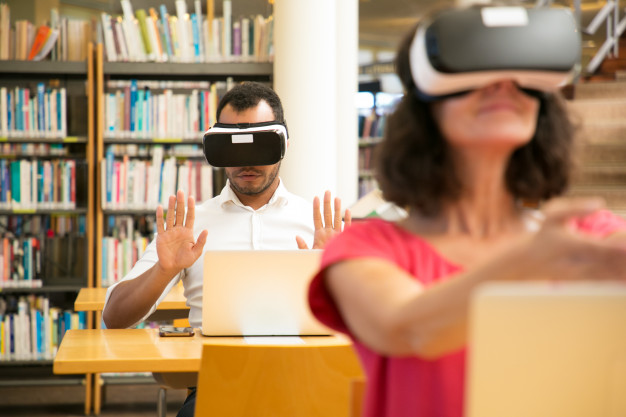
The world around us is growing. Slowly and gradually, we are witnessing innumerable advances in multiple fields and industries.
Education today is increasingly becoming high tech. All advances happening around us in the world of technology are directly impacting learning systems, education, and school administrations.
In this article, we introduce you to some of the most jaw-breaking technological trends in education today. From school administration to education as a whole, these innovations cover varying facets.
1. Custom Learning Experiences
If you judge a fish by its ability to climb a tree, the fish will never be able to succeed at life. Learning methodologies and experiences should not be identical for everyone. Educational systems from the days gone by couldn’t accommodate or make room for customized learning experiences, because of the limitations in place. However, technological advances today ensure that customized learning experiences can be made available and even commonplace today.
Thanks to modern technology in education, we can ensure and initiate custom learning methodologies. Modern gadgets and interfaces ensure that teachers can initiate learning based on the needs and preferences of students. Mobile apps for education take a unique approach to education and ditch the one-size-fits-all approach.
2. Cloud Computing
Cloud computing has by far had the biggest impact on education among all technological advances of the previous decade. Cloud computing can unlock the doors of high tech education at any time and from anywhere. The perks of cloud computing have dawned upon educational institutes during the troubling times of COVID-19.
Schools and colleges have realized how coursework and educational materials can be uploaded online to be accessed by students from any device at any given time. This remote approach to education is why we have been able to continue the learning experience in a remote manner amid COVID-19 restrictions.
Students can now read a book and collaborate with teachers and other students, without the need to be present in the school. The learning experience now continues outside of school hours as well. Teachers remain connected with students and students can connect with each other to ensure that collaboration and communication continue. Cloud-based education apps solve data storage problems as well.
3. Speech to Text Options
A vast majority of app platforms and devices today are now coming up with virtual assistants. These assistants have helped launch the speech to text option, which makes things even easier from a learning perspective. The speech to text technology has made note-taking and creation even easier for both, students and professors. The process has become even more fast-paced and comfortable than it was back in the day. Students can jot notes down, without having to go through the added hassle of writing everything down.
4. Contract Management Solutions
Contract management systems are ideal for educational institutes. Schools and colleges today have thousands of contracts with students, their parents, external resource providers, and teachers. Managing all these contracts in one place is nothing short of a hassle. The use of dedicated education contract management software can reduce the effort and undue time that goes into the management process.
5. Virtual and Augmented Learning Experiences
Virtual Reality and Augmented Reality have come a long way during the past few years. While the applications of VR and AR were already known to stakeholders, the way these technologies have impacted educational institutes is beyond comprehension and expectations.
Both VR and AR are now used to assist pilots and medical experts during their training processes. The VR experience adds a real-life feeling to the training experience, without the negative repercussions of a mistake during such real-life training courses. VR provides an immersive experience that takes students through all aspects of their future profession, without the mistake of real life. This prepares professionals for the field and helps them become better versions of themselves.
6. 3D Printing
3D Printing is not as common around educational institutes as we would like it to be, but it surely has proven to be a revolutionary technology. 3D Printing, which is also known as prototyping, allows students to learn through a more physical and tangible experience. Students of art and architecture can easily shape their ideas of an object or design through the use of 3D printers. Students give shape to their imagination with 3D printing, unearthing numerous other benefits in the process as well.
7. Learning Analytics
Learning analytics related to student performance have made it easier for schools and other educational institutes to grade and rank students according to a more comprehensive structure. The huge volume of data usually involved in student learning is hard to track and analyze, which is why learning analytics makes the process flawless and simple.












